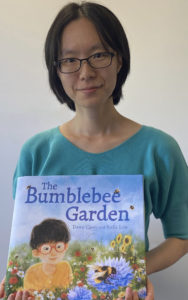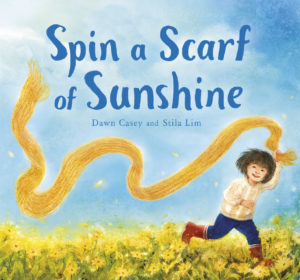The Bumblebee Garden – Meet the Creatives!
by Floris Books • 25 January 2024 • Children's Books, Picture Books • 0 Comments
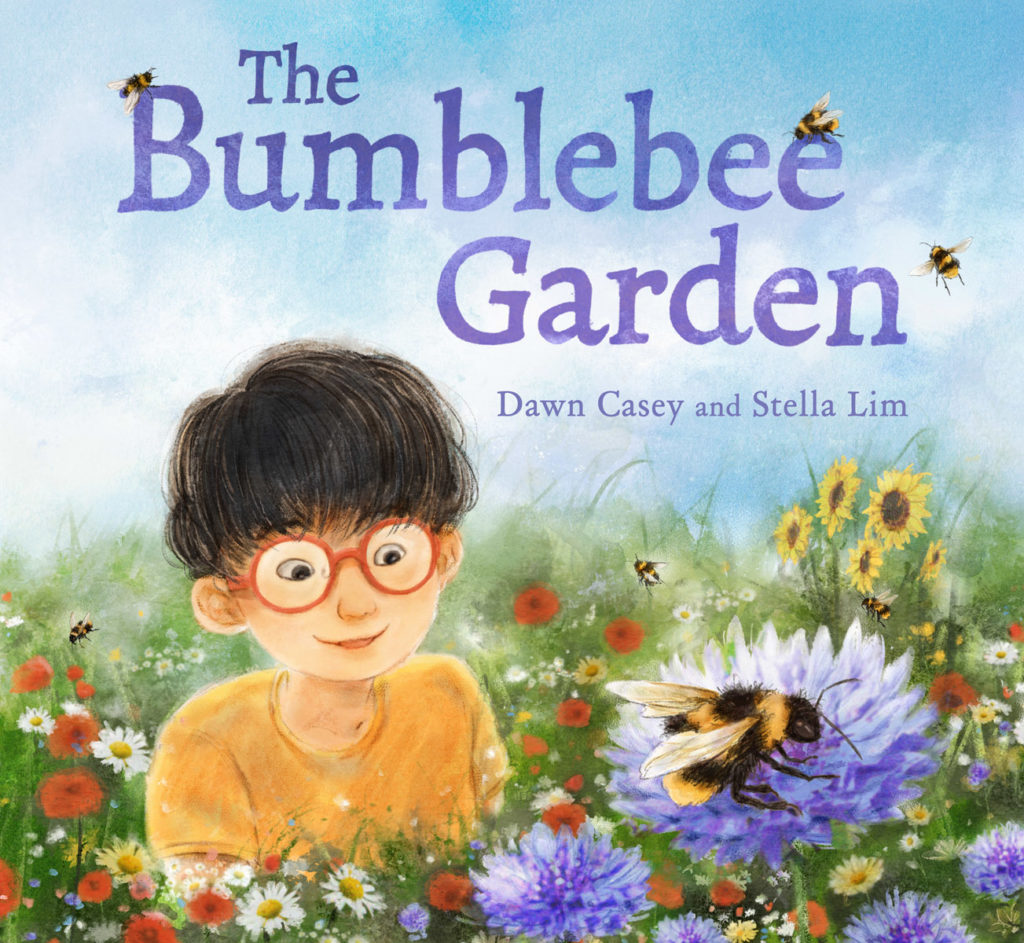
The Bumblebee Garden is a charming new picture book from award-winning British author Dawn Casey and renowned Korean illustrator Stella Lim. The story follows young Ben as he helps in Grandpa’s garden through the year, learning all about the life cycle of bumblebees in the process. The lyrical story and luminous illustrations come together to highlight the importance of bee conservation and open the world of the bumblebee to young children.
We spoke to Dawn and Stella about inspiration, their creative processes and the challenges of telling an appealing yet accurate bee story. They were even kind enough to offer a little advice for anyone looking to make a new beginning in writing or illustrating!
Author Dawn Casey
What inspired you to write The Bumblebee Garden?
Years ago, my enjoyment of the gifts of the honeybee (gloopy honey and golden candlelight!) first fostered my gratitude for bees. Later, I realised what a vital role bees of many kinds play in creating the food we eat. Wild bees need help right now, and there are things we can do to help that are simple and easy.
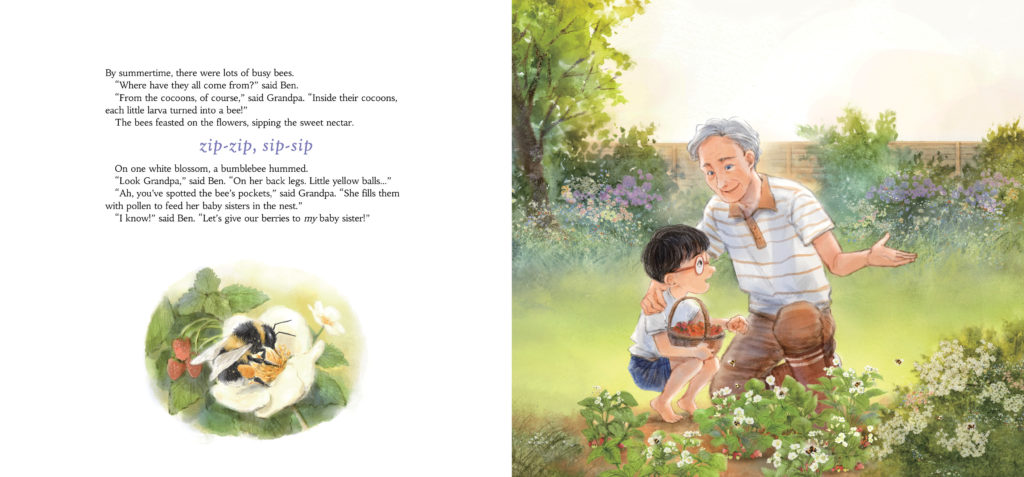
I chose to write about the bumblebee in particular because it’s a bee we all know – a familiar friend. I wonder if, perhaps, humans (as mammals) naturally feel a special sense of affection for small furry creatures, like the chubby fuzzy bumblebee.
Why is it important to open a dialogue with young children about bees?
Actually, I see it the other way around! In my experience, young children are instinctively connected with the natural world. Being small themselves, they especially relate to other small beings – they greet snails and befriend bugs. I remember when I was a girl, lying under my garden hedge, talking to a woolly caterpillar. And when my daughter was little, if she ever found a dead bumblebee, she created a resting place for it, circling it with flowers. No one told her to honour the bee, she just knew it felt the right thing to do. So, perhaps, being with children can help us adults to remember that innate wisdom, to inspire our own actions.
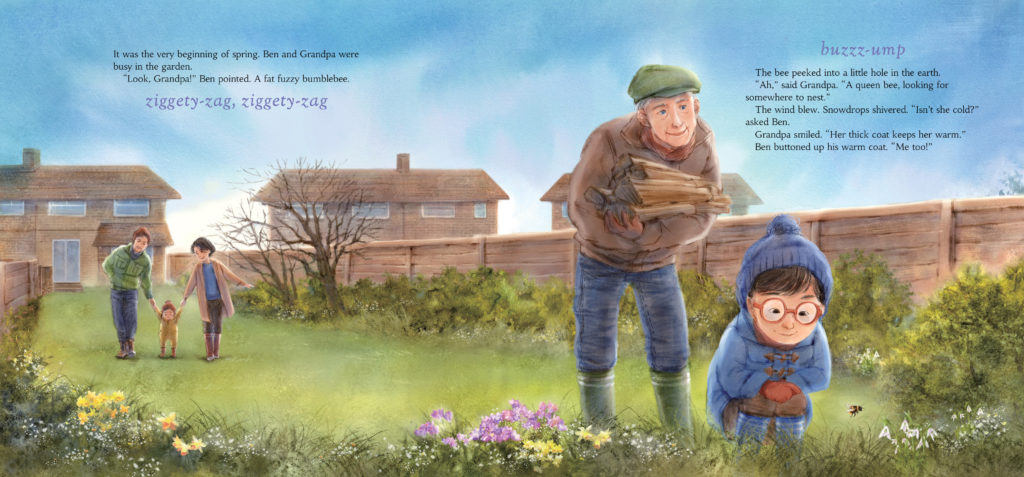
Were you already familiar with the world of bees or did the book represent a journey of learning and discovery for you too?
I very much enjoyed learning about the life of the bumblebee! I’m especially grateful to Alan Stewart, Professor of Ecology at the University of Sussex and convenor of the Royal Entomological Society’s Insect Conservation Special Interest Group, who generously gave his time and shared his expertise to double-check my own findings.
The book does very well at presenting factual information without feeling ‘educational’ in tone. Was it challenging to strike this balance?
In some instances, yes. I value clarity and my intention was to keep it simple. And I also value truth and authenticity, and I enjoy the treasure-hunt of researching, exploring, discovering…
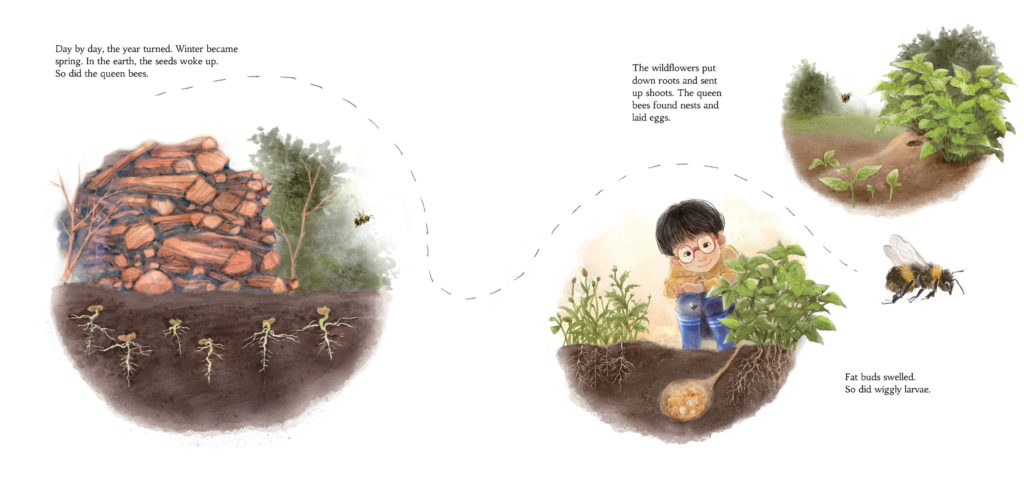
One thing I found helpful in integrating these different elements in the story was speaking the words aloud. I often tell my tales orally, without the written text. It helps me hear and feel how the words roll off the tongue, to keep the language clear.
I was aware too of the unconscious paradigms that can be perpetuated in the language we use. For example, though ‘worker bees’ is the ‘correct’ scientific term, it uses the language of economic systems as a frame for understanding the natural world. I chose to use the word ‘sisters’ instead, which is still true, yet expresses the idea that nature is a family – an idea I believe better serves us, and all life.
What advice would you give budding authors looking to write their own picture books?
- Write what’s true for you – the things you care deeply about
- Hone your skills – there are many wonderful ways to learn from more experienced authors, for example at a writing retreat or watch authors do online events
- Learn the standard form of the picture book – typical wordcount, number of pages etc. Consider how words and pictures work together – sometimes, pictures can tell the story better than words
- Look at rejections as stepping stones upon your journey onwards and upwards
- Believe in yourself!
Illustrator Stella Lim
Why did illustrating this story appeal to you?
I always look for a story in which I can explore a new world or a different life to mine! I love bumblebees, but I didn’t know much about them, so I thought it would be a great chance to get to know their hidden life and unique ecosystem. Also, the story is written by Dawn Casey, who I worked with on Spin a Scarf of Sunshine! I always hoped to be able to work with Dawn again, and when the chance arose, I was delighted.
What’s your favourite illustration from the book and why?
I love all of them! One of my favourites is the illustration where Grandpa, Ben and Hana Mae are relaxing in the back garden. I enjoyed drawing all the details of a bumblebee flying above them in this illustration.
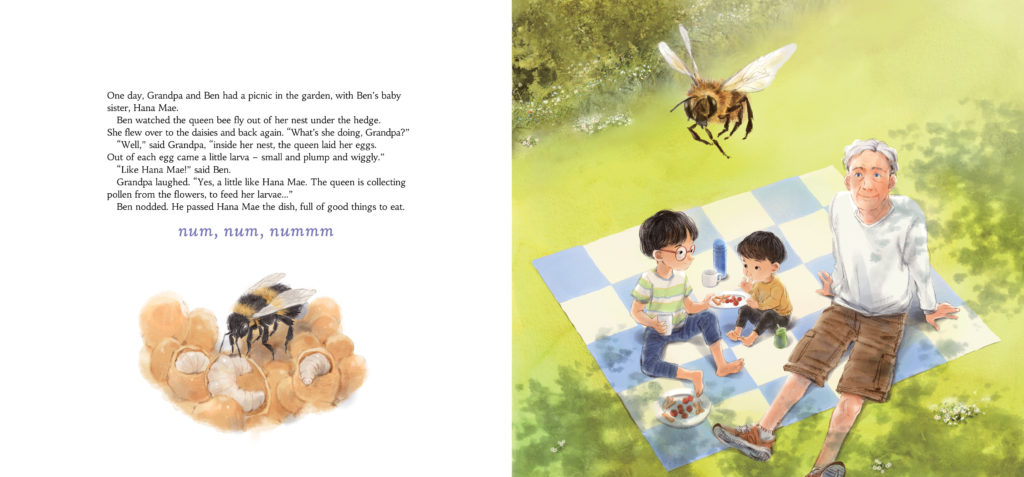
The illustration of the kitchen with Grandpa, Ben, Hana Mae and mum is another favourite. This illustration is full of warmth and it always makes me smile seeing Hana Mae messily enjoying the strawberries.
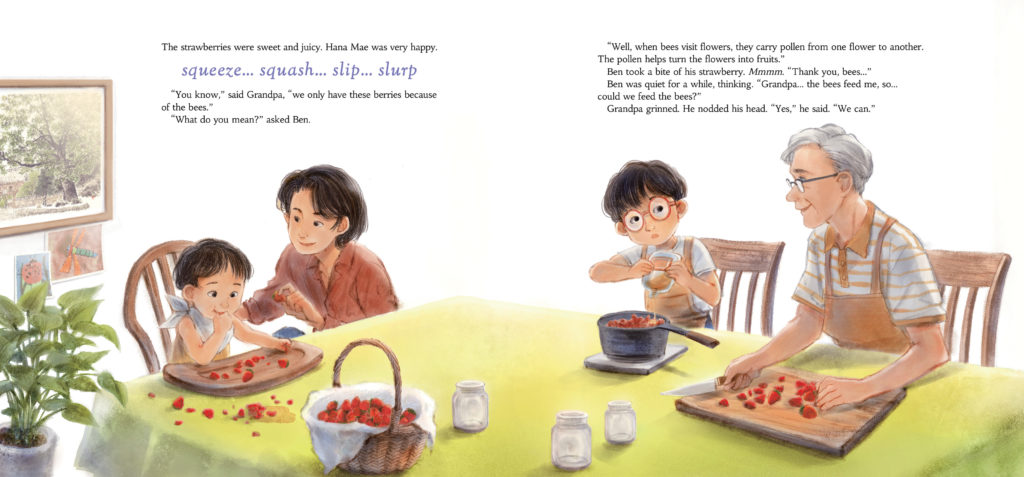
Was the visual setting of the book inspired by any real gardens, or is it totally imagined?
Both! I used to visit a neighbour’s house when I was in the UK, and there were many beautiful plants and flowers in their garden in the summer. Remembering their garden helped me to draw the outline of Grandpa’s garden. I also researched a lot of images of British gardens and mixed my experiences and these images together in the illustrations I created.
Was it challenging to depict all the various stages of a bumblebee’s life cycle?
It was! It was necessary to research their various appearances and life stages to depict them precisely in this book. I bookmarked many videos which showed each of the bee growth phases and the life cycle of queen bees. I was not an expert on insects, but I tried to do my best to depict them accurately.
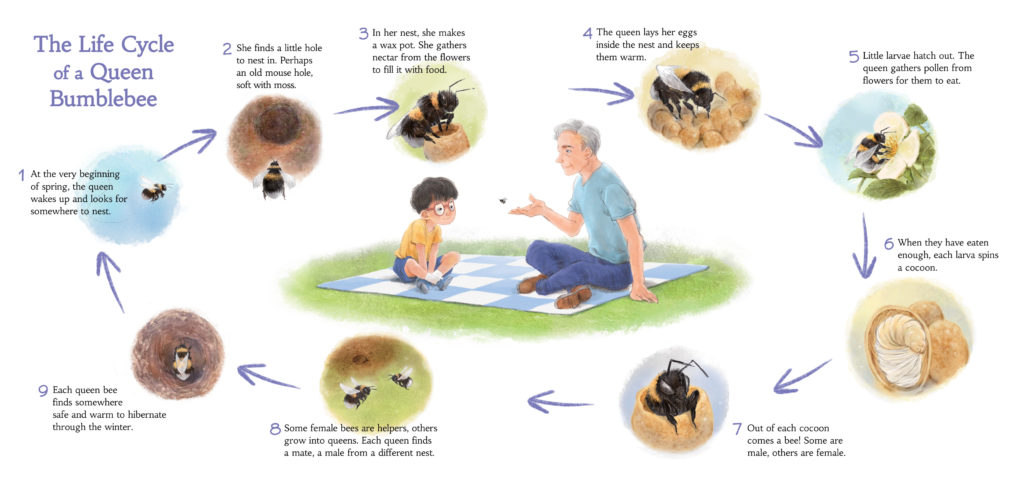
5. What advice would you give new illustrators looking to work on picture books?
First, go to the library and read a lot of books which were released recently! You can get a lot of inspiration and information about how much variety there is in picture books. You can learn about creating characters and a story, and about the book formats which publishers use. Then select the illustrations you are most proud of for your portfolio. Art directors are very busy and have limited time, so it’s great to highlight 4-10 pieces of art in your portfolio when you contact them.
6. You expressed joy at being asked to illustrate mixed-heritage families, how much did this help draw you into the project?
It helped a lot! I was so delighted that I could draw families from different multicultural backgrounds, especially Korea! I’ve illustrated five picture books to date, and I drew them all from my heart. However, having the chance to draw a Korean family was very special! It helped me to immerse myself in the characters much more vividly as if they were alive, and I have a great deal of affection for the book. I’m sure you will love The Bumblebee Garden too!
Find out more about The Bumblebee Garden by Dawn Casey and Stella Lim here. Join our picture book mailing list here to keep up to date on all our beautiful new books.

